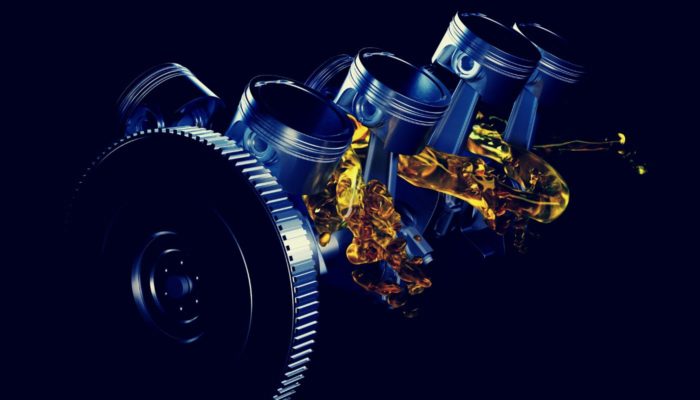
Navigating The World Of Lubricants: Six Questions About Lubricants Answered by ABN Resource
Lubricants improve efficiency, reduce wear and prevent unplanned downtime. Lubricants achieve this by forming a protective layer between surfaces and eliminating direct metal-to-metal contact.
In our new series “Navigating The World Of Lubricants” of articles, we will be sharing knowledge about lubricants to improve awareness of the sector. We hope that non-lubricant professionals will find some interesting facts about the product, which keeps the modern world moving.
These five questions are addressed today:
(1) What is a lubricant?
(2) What is the difference between lubricant and lubrication?
(3) What are the functions of lubricants?
(4) What are the types of lubricants?
(5) What is a characteristic of a good lubricant?
(6) What determines the use of a lubricant?
Find the answers below.
1.What is a lubricant?
In all types of machines, the surfaces of moving or sliding or rolling parts rub against each other. This creates resistance or friction. Friction causes significant wear and tear on the surfaces of moving parts. Any substance introduced between two moving/sliding surfaces with a view to reduce the friction (or frictional resistance) between them, is known as a lubricant.
2. What is the difference between lubricant and lubrication?
The primary purpose of a lubricant is to keep moving/sliding surfaces apart, hence reducing friction and material damage. Lubrication is the technique of lowering friction between moving/sliding surfaces by introducing lubricants between them.
3. What are the functions of lubricants?
(1) It reduces wear and tear of the surfaces by preventing direct metal-to-metal contact between the rubbing surfaces, i.e. by introducing lubricants between the two surfaces.
(2) It reduces the expansion of metal due to frictional heat and material destruction.
(3) It acts as a coolant of metal due to heat transfer media.
(4) It prevents unsteady relative motion.
(5) It lowers maintenance costs.
(6) It also reduces power loss in applications such as internal combustion engines.
4.What are the types of lubricants?
Lubricants are classified on the basis of their physical state, as follows:
(1) Liquid lubricants: all liquid lubricants, including mineral, natural, synthetic oils, emulsions, etc.
(2) Solid lubricants: all lubricants in solid form, including powders, coatings and composites (graphite, polytetrafluorethylene, Molybdenum disulfide, etc.)
(3) Semi-solid lubricants: greases, generally consists of a soap emulsified with mineral or vegetable oil.
(4) Gaseous lubricants: typically it is air, but can be any other gas.
Lubricants contain additives (5-30% of the overall amount) to improve their performance.
Lubricants can also be classified by their main function:
(1) Anti-wear additives (AW): reduces wear by the growth of a protective layer on the surfaces (zinc dialkyldithiophosphate).
(2) Extreme pressure additives (EP): prevents seizure by forming a coating on the components’ surfaces (graphite, molybdenum disulfide).
(3) Friction modifiers: solid particles used to control friction (graphite, molybdenum disulfide, tungsten disulfide, etc.).
(4) Corrosion inhibitors: provide a corrosion-resistant layer to shield surfaces from the assault of chemically active substances such as oxygen.
(5) Viscosity Index Improvers: used to avoid or minimise lubricant viscosity index deterioration at higher temperatures.
Oil lubricants are also frequently classified into mineral (crude oil) and synthetic (man-made or altered, with a defined structure) oils.
5. What is a characteristic of a good lubricant?
(1) Lubricant’s viscosity index should be high.
(2) Lubricants should have flash and fire points that are higher than the machine’s operating temperature.
(3) Lubricants should have high oiliness.
(4) A suitable lubricant’s cloud and pour points should always be lower than the machine’s operating temperature.
(5) The lubricating oil’s volatility should be minimal.
(6) Lubricants should emit the least amount of carbon when in use.
(7) The aniline point should be higher.
(8) Lubricants should have greater resistance to oxidation and corrosion.
(9) Lubricants should be of high detergent grade.
6. What determines the use of lubricant?
The amount of lubrication used and the types of lubricant used are both governed by a variety of factors, including the speed, and temperature of the surrounding environment. Because lubricants have reached the end of their service life or have become contaminated with foreign elements, they are unable to perform their job effectively and must thus be changed on a regular basis or oiled.
In extreme conditions, synthetic oils are typically used. Where the environmental impact is a primary factor, environmentally acceptable lubricants must be used.

